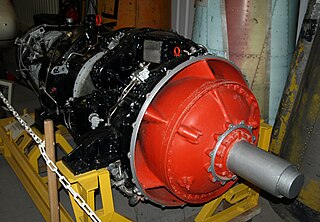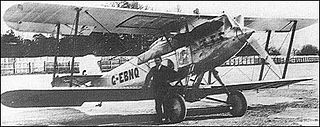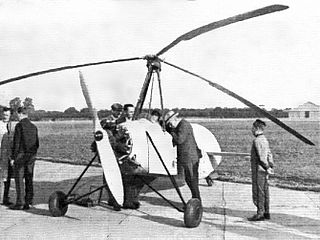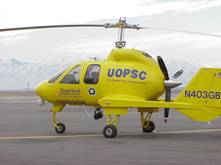
The Rollason Beta was a British midget racing monoplane developed from a competition to build a Formula One air racer in the 1960s in England. The Beta was first flown on 21 April 1967. The aircraft were successful air-racers in England during the late 1960s and early 1970s.

The Cierva C.30 was an autogyro designed by Juan de la Cierva and built under licence from the Cierva Autogiro Company by A V Roe & Co Ltd (Avro), Lioré-et-Olivier and Focke-Wulf.

The Fairey Jet Gyrodyne is a British experimental compound autogyro built by the Fairey Aviation Company that incorporated helicopter, gyrodyne and autogyro characteristics. The Jet Gyrodyne was the subject of a Ministry of Supply (MoS) research contract to gather data for the follow-up design, the Rotodyne.

The Handley Page W.8, W.9 and W.10 were British two- and three-engine medium-range biplane airliners designed and built by Handley Page.

The Beagle B.206 is a 1960s British seven-seat twin-engined liaison and communication aircraft built by Beagle Aircraft Limited at Shoreham Airport and Rearsby Aerodrome.

The Napier Eland was a British turboshaft or turboprop gas-turbine engine built by Napier & Son in the early 1950s. Production of the Eland ceased in 1961 when the Napier company was taken over by Rolls-Royce.

The Cierva C.19 was a 1930s British two-seat autogyro, designed by Spanish engineer Juan de la Cierva. It was built by Avro as the Avro Type 620. It proved to be the most successful and widely produced of the early de la Cierva designs.

The Cierva CR Twin was a five-seat utility helicopter that first flew in the UK in 1969. It was a joint development between Cierva Autogiro Company and Rotorcraft now a subsidiary of Cierva, based on the dynamic systems of the latter company's Grasshopper design. A new, highly streamlined pod-and-boom fuselage was married to the Grasshopper's coaxial rotor system, and the new aircraft registered G-AWRP first flew on 18 August 1969.

The Kellett K-2 was a two-seat autogyro developed in the United States in the early 1930s. Later examples were designated K-3 and K-4 when equipped with more powerful engines.
The Continental IO-346 engine is a fuel-injected four-cylinder aircraft engine that was developed especially for the Beechcraft Musketeer Custom III by Continental Motors. It was produced for that aircraft between 1965 and 1969.

The de Havilland C.24 was a two-seat autogyro built by de Havilland at its Stag Lane works in England in

The Vickers Type 123 was a 1920s British single-seat biplane fighter designed and built by Vickers Limited as a private venture. The only Type 123 was later modified into the Type 141 but, not winning any orders, it was scrapped in 1930.
The Grahame-White G.W.E.7 was a British twin-engined transport biplane, designed by M Boudot and built by Grahame-White Aviation Company at Hendon.

The Wallis WA-120 is an experimental British autogyro developed by Ken Wallis.

The Wallis WA-116 Agile is a British autogyro developed in the early 1960s by former Royal Air Force Wing Commander Ken Wallis. The aircraft was produced in a number of variants, one of which, nicknamed Little Nellie, was flown in the 1967 James Bond film You Only Live Twice.
The Beagle B.218X was a 1960s British four-seat twin-engined light transport monoplane built by Beagle Aircraft Limited at Shoreham Airport. The prototype was modified into the Beagle B.242X but neither variant entered production.

The Hafner A.R.III Gyroplane was a British 1930s experimental autogyro designed by Austrian Raoul Hafner, and built by the A.R.III Construction Company at Denham, Buckinghamshire.
The Airmaster H2-B1 is a British two-seat ultralight helicopter built by Airmaster Helicopters of Camberley, Surrey.
The CSIR SARA II is a South African two-seat experimental autogyro designed and built by the Aeronautics Research Unit of the Council for Scientific and Industrial Research.

The Groen Hawk 4 was a single engine, pusher configuration, four seat autogyro built in the United States in the late 1990s. Three prototypes, two piston engined and one turboprop powered, were flown but the Hawk did not go into production.
















